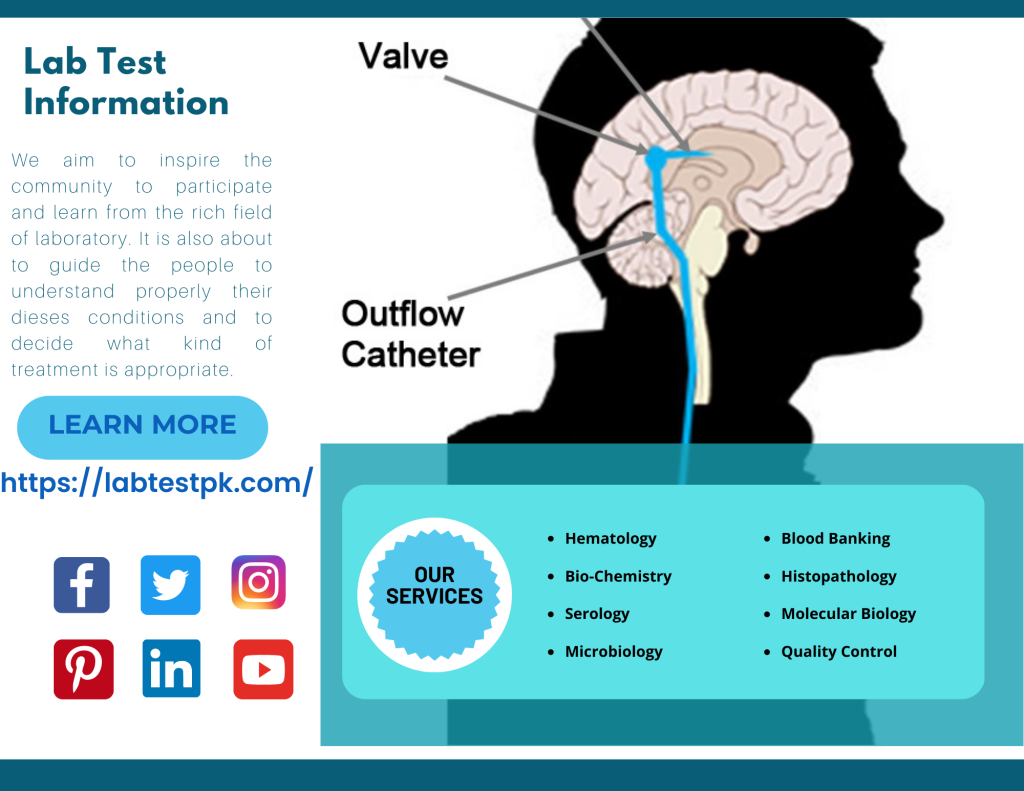Cerebrospinal fluid CSF is formed primarily in the ventricular choroid plexus- Cerebrospinal fluid (CSF) is contained in the Cavity that surrounds the brain in the skull and the forms spinal column. Choroid plexuses present in the ventricles of the brain secrete.
it continuously at a rate of 500mg/dl may day. Cerebrospinal fluid is a clear, colorless body fluid found within the tissue that surrounds the brain and spinal cord of all vertebrates. CSF is produced by specialized ependymal cells in the Ceroid plexus of the ventricles of the brain and absorbed in the arachnoid granulations.
The function of CSF (Cerebrospinal fluid):
Cerebrospinal fluid CSF, (shown in blue) is made by tissue that lines the brain’s ventricles (hollow spaces). It flows in and around the brain and spinal cord to help cushion them from injury and provide nutrients. It absorbs the waste of neural tissue.
Normal Volume of CSF:
The normal volume of the CSF is 100-150ml.
| Volume | 90 to 150 ml |
| Specific Gravity | 1.006-1.008 |
| Cells | 0-8 lymphocytes /cu.mm neutrophils and erythrocytes are absent |
| Protein | 90-50mg/dl |
| Glucose | 50-80 mg/dl |
| Sodium | 144-154 mEq/L |
| Potassium | 9.0-3.5 mEq/L |
| Chloride | 118 132 mEa/L |
| pH | 7.3-7.4 |
| Creatinine | 0.5-1.2 mg/dl |
| Cholesterol | 0.2-0.6mg/dl |
| Glutamine | 6-16 mg/dl |
| Iron | 1-2 mg/dL |
| Thyroxin | 01-0·2ng/dl |
| Urea | 6-16mg/dl |
| Uric Acid | 0.5-4.5 mg/dl |
What is it Used for?
A CSF analysis is used to measure different substances in your cerebrospinal fluid. It may include tests to diagnose.
- Infectious disease (Brain and Spinal Cord).
- Autoimmune disorders.
- Bleeding.
- Brain tumors.
- Alzheimer’s disease.
Symptoms of Brain or Spinal Cord Infection:
- Fever.
- Severe Headache.
- Seizures.
- Nausea and vomiting stiff neck Confusion.
- Changes in behavior.
- Tingling, numbness, and pain in the legs, body, or face.
- Weak muscle spasms.

Sample Collections Procedure:
CSF is normally collected from the subarachnoid space of the spinal cord out lumber level by puncture with a long needle Collecting the CSF.
A physician In the ward, under strict aseptic conditions, performs the procedure. The specimen is to be collected in 2-4ml quantities in 3-4 sterile Screw capped bottles that are Serially numbered and must be sent to the laboratory immediately.
The CSF is the first bottle that is sometimes contaminated with blood and should be kept inside Fluid from the second bottle is used for routine tests while the fluid from the third bottle is used for bacteria culture etc.
If tuberculous meningitis is suspected, the 4th bottle is kept undisturbed in a refrigerator to see Whether a pellicle or coagulum farms.
Otherwise, CSF must never be refrigerated (if for bacterial culture as it kills Influenzas) and should be kept at 37°C.


[…] to severe symptoms in healthy individuals. Another name for Influenza is flu. Flu is a contagious respiratory illness caused by influenza viruses that can be an infection in the throat, nose, and sometimes in the Lungs. Influenza can ever cause […]
[…] Common tumors or Benign tumors […]
[…] Damage to brain […]
[…] No. 1: Protein in CSF is …. in all types of […]
[…] to severe symptoms in healthy individuals. Another name for Influenza is flu. Flu is a contagious respiratory illness caused by influenza viruses that can be an infection in the throat, nose, and sometimes in the Lungs. Influenza can ever cause […]
[…] Brain tumors […]
[…] skilled insertion of a thin, hollow needle into the subarachnoid space allows for the collection of CSF. Careful monitoring of pressure and fluid characteristics […]